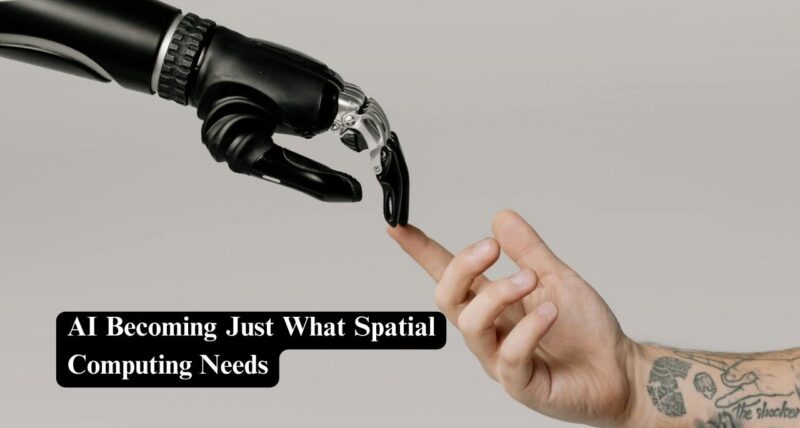The most recent development in AI can greatly increase the power of spatial computing devices such as the Apple VisionPro. Beyond software optimization, artificial intelligence may significantly increase performance in addition to streamlining the production process.
What Is Spatial Computing?
Spatial computing is a 3D-centric approach that integrates virtual worlds into the real world. This form of technology eliminates the need for displays and transforms surfaces into spatial interfaces. It enables computers, robots, gadgets, humans, and virtual entities to traverse around 3D space, improving human-computer and human-to-human communication. Spatial computing uses advanced computers to understand the relationship between the wearer and virtual worlds. It employs wearable headsets that are equipped with cameras, scanners, microphones, and sensors. It produces visuals with resolutions higher than 4K for each eye. It also enables sophisticated gestural recognition, including hand gestures and instructions. Utilizing information about their surroundings allows users to behave naturally.
The Role of AI In Spatial Computing
It is a rapidly evolving field that leverages artificial intelligence to create personalized apps for wearers and surrounding objects. AI capabilities like deep neural networks and massive language models enable human-like communication with computers and even thinking like humans. This is evident in the development of products like Amazon’s Alexa Smart glasses, which offer hands-free voice control. The AI revolution has also led to the use of computer vision models for object detection and tracking. It enabled the positioning and modification of virtual objects in line with the real world.
It will be used to generate items and scenes, produce digital content, and create individualized experiences. Conversational navigation, which uses AI, will also become more prevalent, providing users with a sense of volumetric presence. Virtual keyboards may still be used, but they may not be practical for everyday tasks.
Apple’s iPhone 15 and Apple Watch have been designed to interact with technology through natural double-tap gestures. Amazon’s Alexa LLM and Echo Frames promote a hands-free narrative, promoting Alexa for making calls, playing audiobooks, or managing playlists. Spatial navigation is another area where AI and spatial computing enable robots, drones, and autonomous vehicles to understand their surroundings.
Spatial computer hardware can be seen as a way to engage with AI in a more human-centered manner. The integration of autonomous cars, drones, humanoid robots, delivery robots, and virtual assistants enables seamless interaction with our environment. By combining data and virtualization with the real world, it opens up new opportunities for exploration, applications, and business models. Thus, it is an invaluable tool for innovation and company revolution.
An Advance In Spatial Computing Using AI
Sam Altman of OpenAI plans to raise over $7 trillion to create chips that could fundamentally change the semiconductor industry. Intel is already using AI to develop its next chip generation. And Nvidia is using AI to assess transistor positioning for increased performance and power efficiency. Lucas Wilson discussed the potential of spatial computing technologies to revolutionize creatives’ immersive experiences, including artists, and enhance traditional performances. ArkRunr CEO, a seasoned professional in spatial computing, has invented numerous methods that are now standard practice in the field.
Spatial computing, a technology combining hardware and software, enables robots to produce goods and services in virtual and real settings. Advances in 3D image representation, optics, sensor downsizing, and software are driving its growth. This technology offers opportunities for creativity, innovation, and human connection, facilitating co-presence and integrating gadgets into everyday routines. Large-scale businesses will find artificial intelligence increasingly appealing as it continues to advance.



